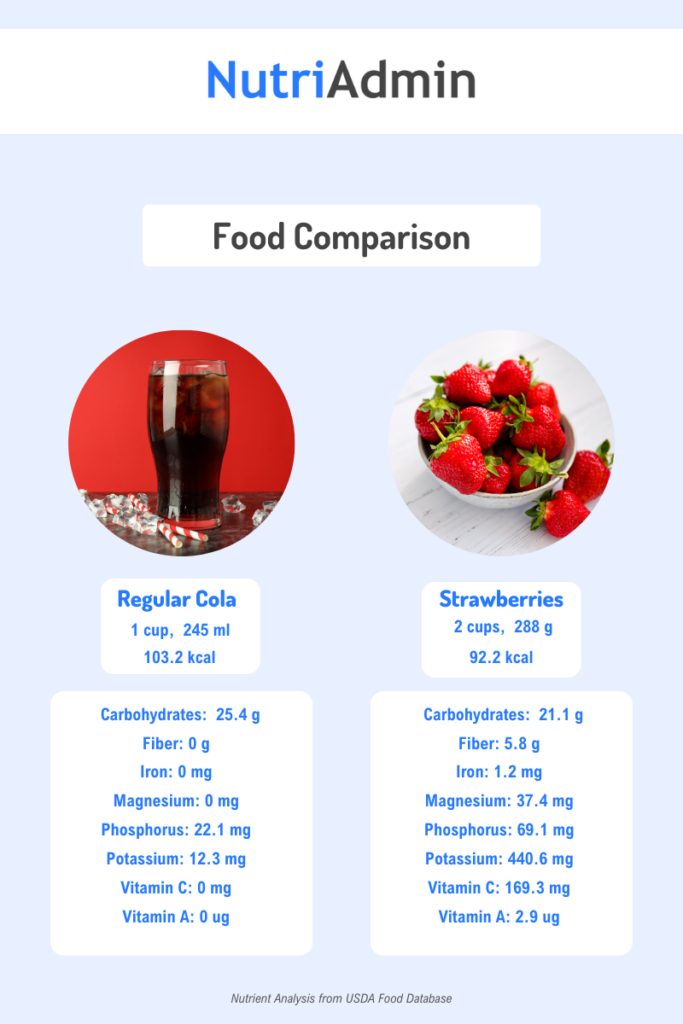Do you have extensive knowledge about how macros in meal planning help in achieving your goals? Are you unsure how to calculate your macronutrient requirements when planning meals? Curious about managing weight through macronutrient-based strategies? Want to explore how macronutrient distribution helps in managing certain health conditions? Confused about the role of dietary preferences, like low fat, low carbohydrate, or keto diet, in influencing macro distribution? This diet planning guide will help you understand the role of macros in nutrition, fitness, and health.
What are macronutrients?
Macronutrients are essential nutrients that are needed in large quantities crucial for maintaining body functions and daily activities. They fall into three main categories: proteins, carbohydrates, and fats.
Importance of Macronutrients
Macronutrients play an important role in providing energy and supporting essential bodily functions. They help with growth, tissue repair, metabolism, and overall organ function. In meal planning, macros are a factor considered when creating diet plans for individuals with different goals.
Carbohydrates
Carbohydrates provide energy, regulate blood glucose and insulin, play a role in cholesterol and triglyceride metabolism, and aid in fermentation.
While essential, it’s crucial to be mindful of the quality and type of carbohydrates you consume. They come in two forms: simple and complex carbohydrates. When we eat, the body converts both complex and simple carbohydrates into glucose, which serves as an important energy source. Glucose is utilized by the brain and cells throughout the body for various functions. Any surplus glucose is stored in the liver and muscles for later use.
Simple Carbohydrates
Simple carbohydrates, also called simple sugars, includes various forms of sugar such as glucose (blood sugar), fructose (often found in fruits) and sucrose (table sugar). These small-molecule sugars are easily broken down and absorbed by the body, making them the quickest source of energy. They have the ability to rapidly increase blood glucose levels.
Simple carbohydrates can be naturally found in foods like fruits, dairy products, honey, and maple syrup. It offers a sweet taste to various treats such as candies and cakes. Additionally, they are present in processed and refined sugars like those found in candies, table sugar, syrups, and soft drinks.
Complex Carbohydrates
Complex carbohydrates, found in whole grains, beans, vegetables, and starches. The complexity of these sugars means they need more time to be processed in the digestive system. This leads to a gradual and controlled impact on blood sugar. They also often contain more fiber, and offer essential vitamins and minerals compared to simple carbohydrates.
Fiber
Fiber is a special kind of carbohydrate that the body can’t break down. Unlike other carbs that turn into sugar, fiber stays whole and passes through the body without being digested. Fiber plays a role in controlling how the body uses sugars. This helps manage hunger and keeps blood sugar levels steady.
While diet planning based on macros is essential, it’s crucial not to focus solely on the grams of carbohydrates or calorie content. Instead, consider the quality of the carbohydrates you consume. Evaluate their impact on blood sugar levels, the nutrients they provide, and the amount of fiber in certain foods. Adjust these factors based on your specific goals and health conditions.

Proteins
Protein is an important nutrient for body growth and repair, composed of amino acids—nature’s building blocks. As we consume protein, it breaks down into amino acids, including essential ones we need from our diet.
Animal sources, such as meat, dairy, fish, and eggs, contain protein. Plant-based options like beans, lentils, and nuts are also great sources of protein. They usually have fiber, which is beneficial to our gut health. It’s beneficial to enjoy a variety of these protein sources.
Fats
Fats are a crucial component of a balanced diet, serving various functions in the body. Composing essential fatty acids, the body cannot produce them internally, making them vital for overall health. Fats aid in the absorption of fat-soluble vitamins, such as A, D, E and K, and contribute to energy storage. However, the body can convert unused fats, as well as other macronutrients like carbohydrates and proteins, into body fat. There are two main types of fats in our diet: saturated fats, found in both animal and plant sources, and unsaturated fats, including monounsaturated and polyunsaturated fats.
Saturated fats can elevate “bad” LDL cholesterol, increasing risk to cardiovascular problems. Trans fats, found in some foods and partially hydrogenated vegetable oils, can also impact cholesterol levels. Limiting saturated and trans fats intake is recommended.
In contrast, unsaturated fats, found in oils, avocados, and certain nuts, offer heart-protective benefits by regulating cholesterol levels. Monounsaturated fats maintain “good” HDL cholesterol, while polyunsaturated fats, including omega-3 and omega-6, can lower “bad” LDL cholesterol. Oily fish, nuts, and certain oils are rich sources of these beneficial fats. Reducing saturated fats in your meal plans and incorporating unsaturated fats can contribute to heart disease prevention.
In terms of calories, a gram of fat is approximately 9 calories. This makes it more calorie-dense compared to approximately 4 calories per gram found in carbohydrates and protein.
Calculating Macronutrients in Meal Planning
When creating meal plans with specific macronutrients, it is advantageous to know how to calculate the amount of each macronutrient you should consume. If you want more detailed information on how to make a meal plan, you can check our ultimate guide. It will show you practical steps and specific tips on creating effective meal plans.

Calorie Requirement
Before calculating macros for your meal plans, you need to determine your calorie needs. This can vary based on factors such as age, sex, weight, height, physical activity, and health conditions. To calculate this, you can use computations like Mifflin St-Jeor Equation. For convenience and time efficiency, utilizing free nutrition online tools can automate the calculation of caloric requirements.
Macronutrients in Percentages
The USDA Dietary Guidelines for Americans 2020-2025 recommend an ideal adult diet with macro percentages as follows:
- Carbohydrates: 45% to 65%
- Proteins: 10% to 35%
- Fats: 20% to 35%
To incorporate these macronutrient percentages in your meal plans, divide the calorie requirements according to your chosen percentages.
For example, a woman with a calorie requirement of 1,800 kcal per day. You decide to have 50% carbohydrates, 30% protein, and 20% fat.
Step 1. Multiply the calorie requirement by the chosen percentages.
- Carbohydrates = 1,800 x 0.50 = 900 kcal
- Protein = 1,800 x 0.30 = 540 kcal
- Fat = 1,800 = 0.20 = 360 kcal
Step 2. To calculate macros in grams, divide carbohydrates and protein by 4 (since 1g of carbohydrate and protein is approximately 4 kcal). Then, divide fat by 9 (since 1g of fat is approximately 9 kcal).
- Carbohydrates = 900 kcal / 4 = 225 g
- Protein = 540 kcal / 4 = 135 g
- Fat = 360 kcal / 9 = 40 g
Calculating Protein Needs
According to the British Nutrition Foundation, the protein recommendations for adults is 0.75g per kg of body weight. Current suggestions indicate 56g/day for men and 45g/day for women, calculated using body weights of 75kg for men and 60 kg for women.
On average in the UK, men are consuming around 85g, and women about 67g of protein per day, exceeding the recommended levels. This suggests that, in general, most individuals are meeting their protein requirements. You can also use other sources to calculate macronutrient requirements like protein in meal planning, such as the Dietary Reference Intake of your country.
However, certain groups, such as fitness enthusiasts, athletes, or older adults, may have higher protein needs. It is advisable to seek advice from a nutrition and wellness professional to ensure that your meal plans can meet your macronutrient protein requirements.
Meal Planning Macronutrients
You may have various goals, such as fat loss, muscle gain, lower cholesterol, managing blood sugar, controlling blood pressure, among others. Understanding how much of each macronutrient you need can help you achieve your goal when meal planning.
If you want to lose weight or change your lifestyle, besides knowing about macronutrients, it’s crucial to learn how to start and maintain a healthy lifestyle. This includes understanding weight loss willpower.
If you are following diets that require specific macronutrient content, such as the keto diet, it is important to be aware of the macros you are consuming. This ensures that you are correctly adhering to the required macronutrients of the diet while planning your meals.
Adjusting Protein Intake
Maintaining or improving fitness, aging, pregnancy, or managing health conditions may need adjustments in the protein levels in the diet. Here are some instances where a diet plan adjusts the key macronutrient protein.
- Muscle Building and Strength Training. Individuals engaging in intense physical activities, such as weightlifting or resistance training, often need more protein to support muscle repair and growth.
- Athletes and Endurance Training. Endurance athletes, like runners or cyclists, may require additional protein to aid in muscle recovery and performance optimization.
- Pregnancy and Breastfeeding. Pregnant and breastfeeding women often need more protein to support the development of the fetus and the production of breast milk.
- Aging. Older adults may benefit from increased protein intake to prevent muscle loss, support bone health, and maintain overall functionality.
- Illness or Surgery Recovery. During recovery from illness, surgery, or injury, the body may require elevated protein intake. This adjustment aids in the healing process and prevents muscle wasting.
- Weight Loss. Protein can be crucial for individuals on a weight loss journey. It helps in preserving lean muscle mass, promotes satiety, and supports overall metabolic health.
- Certain Health Conditions. Some health conditions, such as chronic kidney disease or certain types of cancer, may require adjustments to protein intake based on medical recommendations.
Modifying Carbohydrate Intake
There are various instances where a person might need to adjust their carbohydrate intake. Some common scenarios include:
- Athletic Performance. Endurance athletes, such as marathon runners or cyclists, may need to adjust their carbohydrate intake. This ensures they have sufficient energy stores for prolonged exercise.
- High-Intensity Training. Individuals engaging in high-intensity workouts, like interval training or heavy resistance training, may require more carbohydrates to support energy demands.
- Weight Management. Adjusting carbohydrate intake is often considered in weight management strategies. Reducing or modifying carbohydrate consumption, especially simple carbohydrates can contribute to overall calorie control.
- Medical Conditions. Diabetes and metabolic syndrome, may need careful management of carbohydrate intake to control blood sugar levels.
- Pregnancy. Pregnant women may need to adjust carbohydrate intake to meet increased energy demands and nutritional needs during this period.
- Specific Diets. Some diets, like low-carbohydrate or ketogenic diets, intentionally involve adjusting carbohydrate intake for various health or weight-related goals.
- Age-Related Changes. As people age, their metabolism and activity levels may change, leading to potential adjustments in carbohydrate intake for optimal health
Customizing Fat Intake
There are numerous situations in which individuals may find the need to modify their fat intake. Some examples include:
- Weight Management. Weight management strategies often involve adjusting fat intake. Reducing or modifying fat consumption can contribute to calorie deficit.
- Dietary Preferences. Individuals following specific dietary preferences may need to adjust their fat intake accordingly. For those following a ketogenic diet, adjusting fat intake is a fundamental aspect of the diet plan. They aim to consume a diet with high fat, and low carbohydrate to induce ketosis.
- Athletic Performance. Depending on their sport and training intensity, athletes may need to modify fat intake to meet energy demands and enhance performance.
- Health Conditions. Individuals with cardiovascular issues may adjust fat intake, often reducing saturated and trans fats for heart health. Similarly, individuals with gallbladder issues, pancreatitis, liver diseases, digestive disorders, malabsorption disorders, and those managing weight post-bariatric surgery should lower fat intake.
- Hormonal Changes: During pregnancy or menopause, and conditions like Polycystic Ovary Syndrome, may prompt individuals to adjust their fat intake. This is to support hormonal balance and overall health.
- Nutritional Needs: Different life stages, such as childhood, adolescence, and older adulthood, may require adjustments in fat intake to meet changing nutritional needs.
Do the plan yourself or consult with specialist
If you want to change your lifestyle or improve your diet for general health, you may use the calculations to guide you in manually computing macros by calories and grams to create your meal plans.
It is important to remember that the examples mentioned here are for illustration purposes. However, they should not be considered as medical advice. Dietary recommendations and meal plans need to be individualized.
If you have specific medical conditions, it is recommended to consult with healthcare professionals and Registered Dietitians for a dietary plan that best suits your needs, especially for diets that might limit certain macronutrients.
Meal Planning based on Macronutrients as a Nutritionist, Coach, or Personal Trainer
If you are a nutritionist, coach, or personal trainer who creates hundreds of meal plans requiring specific macronutrients weekly, you may choose to use professional nutrition software.
NutriAdmin, an all-in-one nutrition software, has a meal plan generator feature that can assist you in automatically creating meal plans. You can customize it based on your calorie needs, chosen macro percentages, preferred diets, available ingredients, cooking time, and more, aligning with your goals and needs.
If you only need some recipes to complement your own, ones that would fit your clients’ macros and calorie needs, NutriAdmin also features a recipe database where you can search for practical recipes that are easy to make.
Nutrition analysis also doesn’t have to consume too much of your time. NutriAdmin enables users to automatically analyze the nutrient content of foods, recipes, and meal plans for your clients. This way, you can effortlessly check if your clients are meeting their goals and assess DRIs and micronutrient deficiencies.
If you want to explore other software options, we’ve created guides on choosing the best apps for nutritionists, and the best apps for coaches and personal trainers. This can help you choose which software can be a great fit for your nutrition or wellness business.




